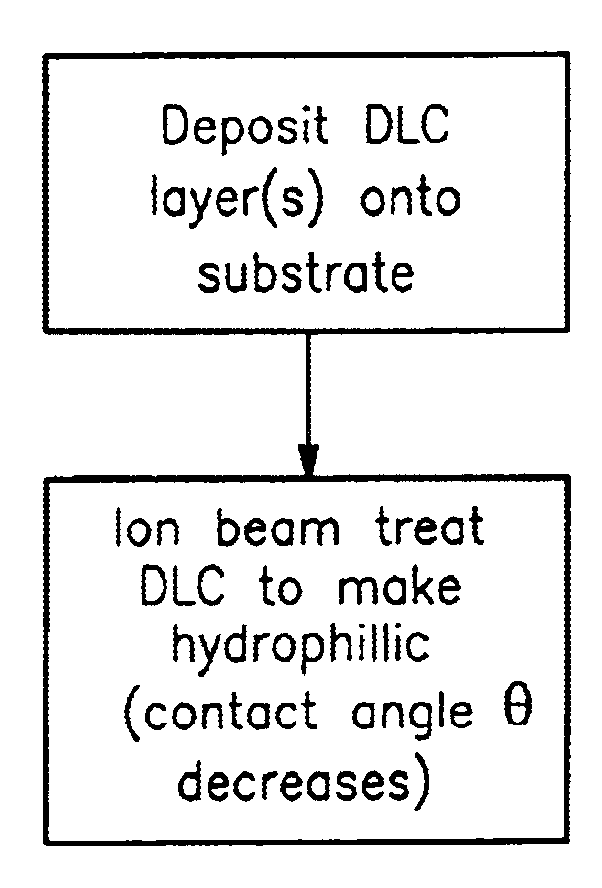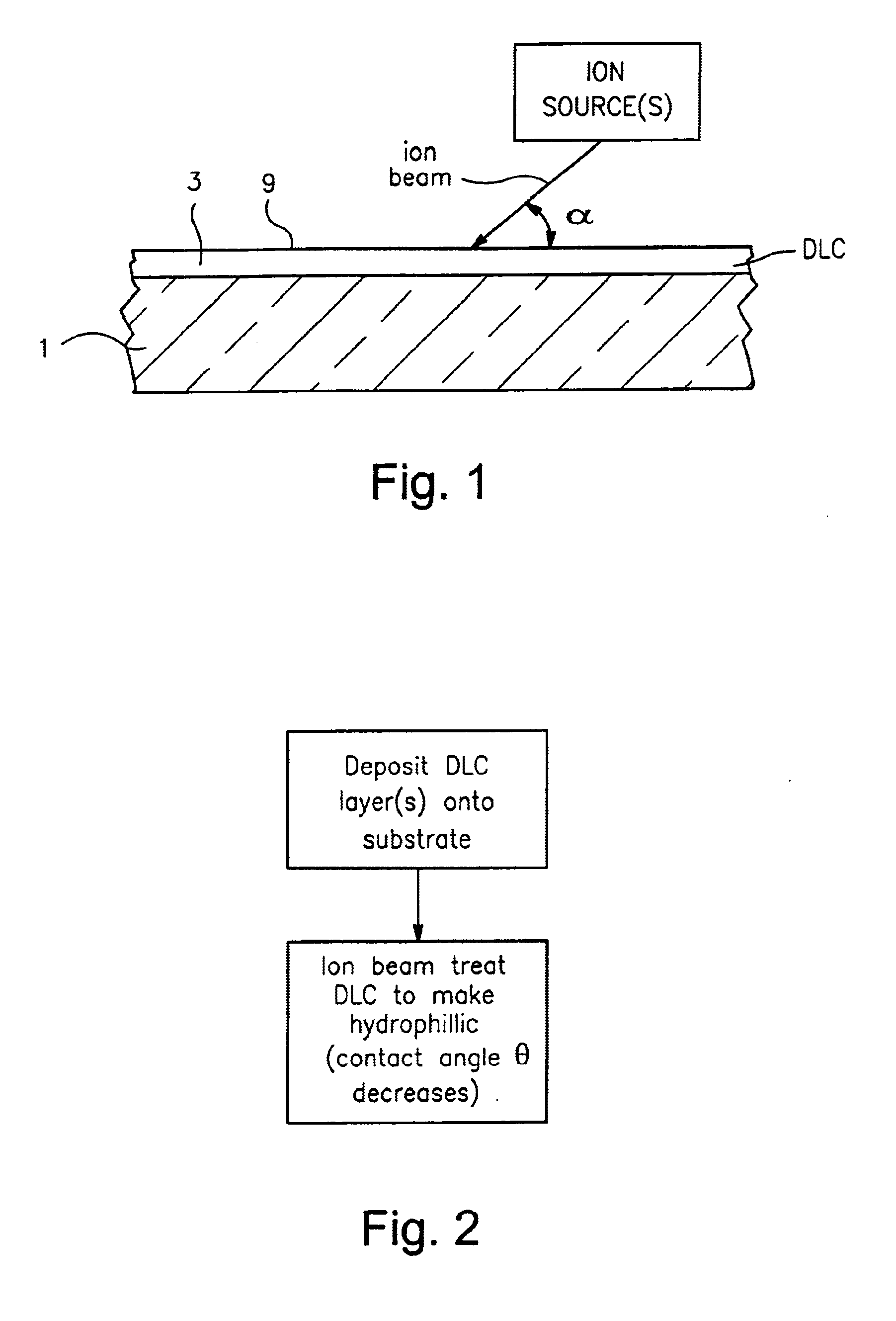Method of ion beam treatment of DLC in order to reduce contact angle
a technology of ion beam and contact angle, which is applied in the direction of nuclear engineering, transportation and packaging, railway signalling, etc., can solve the problems of high cost, high cost, and inefficiency, and achieve the effect of short time and quick drop
- Summary
- Abstract
- Description
- Claims
- Application Information
AI Technical Summary
Benefits of technology
Problems solved by technology
Method used
Image
Examples
example
The following hypothetical Example is for purposes of example only, and is not limiting. On a 2 mm thick clear glass substrate, a DLC layer 3 was ion beam deposited to a thickness of 14.69 angstroms (Å) using acetylene (C2H2) feedstock gas (145 sccm) at a linear velocity of 100 inches / minute, at 2970 V and 0.57 amps. The layer 3 was not doped with any of the dopants B, N, etc. The result was a DLC layer 3 of a-taC:H, having an initial contact angle θ of 73.47 degrees. Then, the coated article was then ion beam treated using a gas including a mixture of oxygen and nitrogen in the ion source. The ion beam for the treatment hit the surface 9 of layer 3 at an angle α of about 45 degrees. An energy of from 100-3,000 eV (e.g., 1,500 eV) was used. Following the ion beam treatment of surface 9, the coated article including substrate 1 with DLC layer 3 thereon had a contact angle θ which had dropped all the way down to 9 degrees. Thus, it can be seen that the contact angle decreased by about...
PUM
| Property | Measurement | Unit |
|---|---|---|
| Fraction | aaaaa | aaaaa |
| Fraction | aaaaa | aaaaa |
| Fraction | aaaaa | aaaaa |
Abstract
Description
Claims
Application Information
 Login to View More
Login to View More - R&D
- Intellectual Property
- Life Sciences
- Materials
- Tech Scout
- Unparalleled Data Quality
- Higher Quality Content
- 60% Fewer Hallucinations
Browse by: Latest US Patents, China's latest patents, Technical Efficacy Thesaurus, Application Domain, Technology Topic, Popular Technical Reports.
© 2025 PatSnap. All rights reserved.Legal|Privacy policy|Modern Slavery Act Transparency Statement|Sitemap|About US| Contact US: help@patsnap.com



